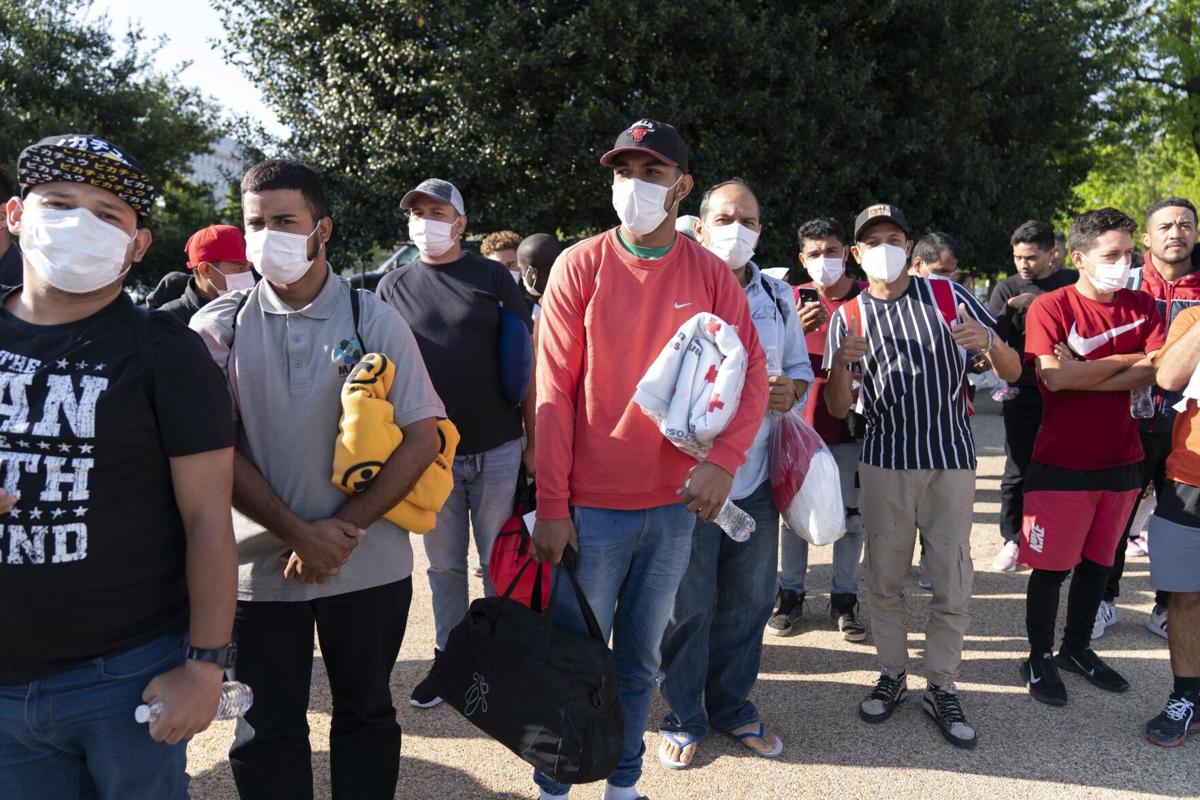Arizona continues to bus migrants to Washington, D.C., and a total of 637 migrants had volunteered for the trip as of Monday.
Gov. Doug Ducey began the program May 9 of busing migrants who crossed the border in Yuma and volunteered to go to D.C. Arizona was following Texas’ example in sending migrants to the nation’s capital, despite the fact the federal government already pays to transport them.
When asked what Arizona has spent on the program so far, the governor’s spokesman C.J. Karamargin said the final costs have not been calculated.
There is a $15 million allocation in the state’s proposed general appropriations act “for transportation of individuals who entered Arizona seeking asylum to other states,” which passed out of two House committees Tuesday and was on the House floor Wednesday.
The federal government already allotted $150 million in a spending bill passed in March to fund nonprofit organizations that serve migrants entering the country. Part of what those nonprofits do with those federal dollars is arrange transportation for the migrants to get to their sponsors in the United States.
Pima County has already received more than $10 million from the Federal Emergency Management Agency since April of 2021, which will continue to cover costs for migrant services for the next several months. The Tucson migrant shelter Casa Alitas is not taking part in the governor’s program.
The amount that Yuma has received was not readily available.
It’s unclear how long the busing program will continue, but there’s still a demand, Karamargin said.
With the number of migrants arriving at the southern border increasing, the governor’s office has said border communities and nongovernmental organizations are strapped.
“We decided to step up and help alleviate the burden on our NGOs and get these folks closer to where they ultimately want to be,” Karamargin said in May.
The state is currently paying to transport the migrants and for other border security efforts through the Border Security Fund, established in 2021 in partnership with the Legislature.
And Arizona is poised to spend more money on border security measures in the upcoming budget, currently being debated. The proposed budget includes $335 million for a border fence and another $209 million for the Border Security Fund for things like aid to local sheriffs and prosecutors.
Migrants who volunteer to make the state-funded trip are connected to a nonprofit organization once they arrive in D.C., which then assists them in getting to their final destination where they have a sponsor, who is typically a friend or family member.
The more than 600 migrants who have volunteered have traveled on 17 buses, Karamargin said.
The majority of the migrants were from Colombia at 68%, followed by Peruvians at almost 17%, and then by smaller portions of people from Nicaragua, Venezuela, Cuba, Haiti, the Dominican Republic, Jamaica and Chile, as well as very small numbers from the African countries of Senegal, Angola and Congo.
The migrants all had final destinations in East Coast states, with 25% going to New York, 23% to New Jersey, 16% to Florida and smaller numbers going to Connecticut, Virginia, Massachusetts, the Carolinas, Maryland and Georgia.





